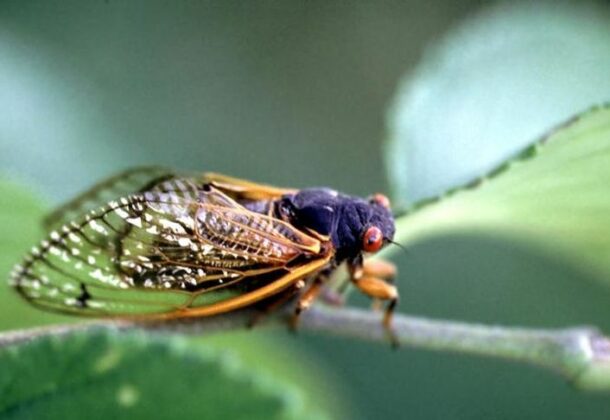Southern Cicadas May Emerge in St. Mary’s

Two sets of cicadas are scheduled to emerge from the ground this spring. The Northern Illinois Brood and the Great Southern Brood, also known as Brood 19. The combination is expected to bring billions of cicadas to the surface, after a 17-year and 13-year hiatus.
It’s unlikely there will be overlap beyond Illinois. And unlike 2021 when Brood 10, a 17-year cyclic cicada, emerged, Maryland won’t see much of either of the broods arriving for their first dual emergence since Thomas Jefferson was president. Except for the potential in St. Mary’s County, reports The Baltimore Banner, where the Great Southern Brood emerged 13 years ago.
Here’s what Michael Raupp of the Maryland Extension Service writes in “Bug of the Week“:
2024 is the year that the ginormous Great Southern Brood, Brood 19, will emerge from extreme Southern Maryland in a broad swath that ranges south to Mississippi, west to Texas, and north to the central US. This is arguably the largest brood of periodical cicadas in the US, right up there with Brood 10 which we enjoyed in our region in 2021. Brood 19, the Great Southern Brood, is fascinating and is comprised of four species of periodical cicadas which emerge every 13 years. Also this year, the Northern Illinois Brood, Brood 13, will appear in a handful of midwestern states. Brood 13 is comprised of three species that emerge every 17 years. In a few locations in Illinois, Brood 19 and Brood 13 are expected to emerge simultaneously with seven species in total, producing one heck of a cicadapalooza and a fascinating biological event. The last time this happened with Broods 13 and 19 was 13 X 17 = 221 years ago, way back when the Louisiana Purchase brought a whole bunch of new territory to our growing nation.
Southern Maryland missed the greatest onslaught of Brood 10 that emerged in Maryland in early May 2021 — mostly in Allegany, Anne Arundel, Baltimore, Carroll, Cecil, Frederick, eastern Garrett, Harford, Howard, Montgomery, Prince George’s, and Washington counties. During the few weeks adults live they shed their nymphal exoskeletons, grow wings, fly, mate, lay eggs in trees, and then die. explains the Maryland Department of Agriculture.
Cicadas do no harm to humans or pets but they can harm young trees filled with eggs. Netting young trees is considered the best preventative, and spraying is discouraged since it hasn’t proven effective as has the netting. Nets can be found at home improvement and garden stores and should cover the tree, be breathable but also closable to keep out the egg-laying cicadas. Otherwise, cicadas probably help the soil by decaying into it and adding nutrients.
To learn about tours and trips into the Chesapeake, keep in touch with Fins + Claws on Facebook. Catch up on Messages from the Cap’n Member Page. Please visit Cap’n Jack’s lore and share with your social media sites. Or reach him here: [email protected] or 240-434-1385.




















